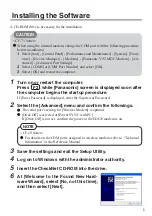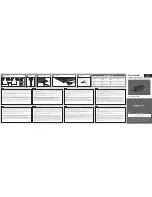
Making Backup Copies
It is important to make copies of all your data and system
diskettes. Make backup (working) copies of all diskettes that
contain programs, such as your MS-DOS and Windows diskettes;
then use only the copies. Store the original diskettes away from
your working diskettes. Also, copy your data diskettes as
necessary to keep your files up-to-date.
You’ll probably use your hard disk to store the programs and data
files you use regularly. Keep backup copies of all your files on
diskettes. For large amounts of data, you might want to consider a
portable tape backup unit.
You can copy your data in several ways. See your MS-DOS or
other operating system manual for instructions.
Using a Single Diskette Drive System
MS-DOS expects a computer to have at least two diskette drives (A
and B), and displays prompts and messages accordingly. Your
ActionNote has one 3½-inch diskette drive; this is drive A.
MS-DOS uses the one drive as two by displaying alternate
prompts for the source and target diskettes.
For example, if you need to make a copy of a diskette, you can
insert the diskette in drive A and enter the following command:
DISKCOPY A : B :
MS-DOS copies the data from drive A (the source diskette) to its
memory and then prompts you to insert the diskette for drive B.
At this point, you remove the original diskette, insert a blank
diskette (the target diskette), and press any key to continue. Then
the operating system copies the data from its memory to the
second diskette.
2-14
Using Your Computer
Summary of Contents for ActionNote 4SLC2-50
Page 1: ......
Page 3: ...EPSON ActionNote 4SLC2 50 User s Guide ...
Page 122: ...MNP Command Summary continued Fax Modem B 9 ...
Page 123: ...AT Register Summary B 10 FaxlModem ...
Page 125: ...S21 Bitmapped configuration register S22 Bitmapped configuration register B 12 Fax Modem ...
Page 128: ...S82 Break handling affected by K commands Result Code Summary Fax Modem B 15 ...
Page 154: ...400275800 ...
















































